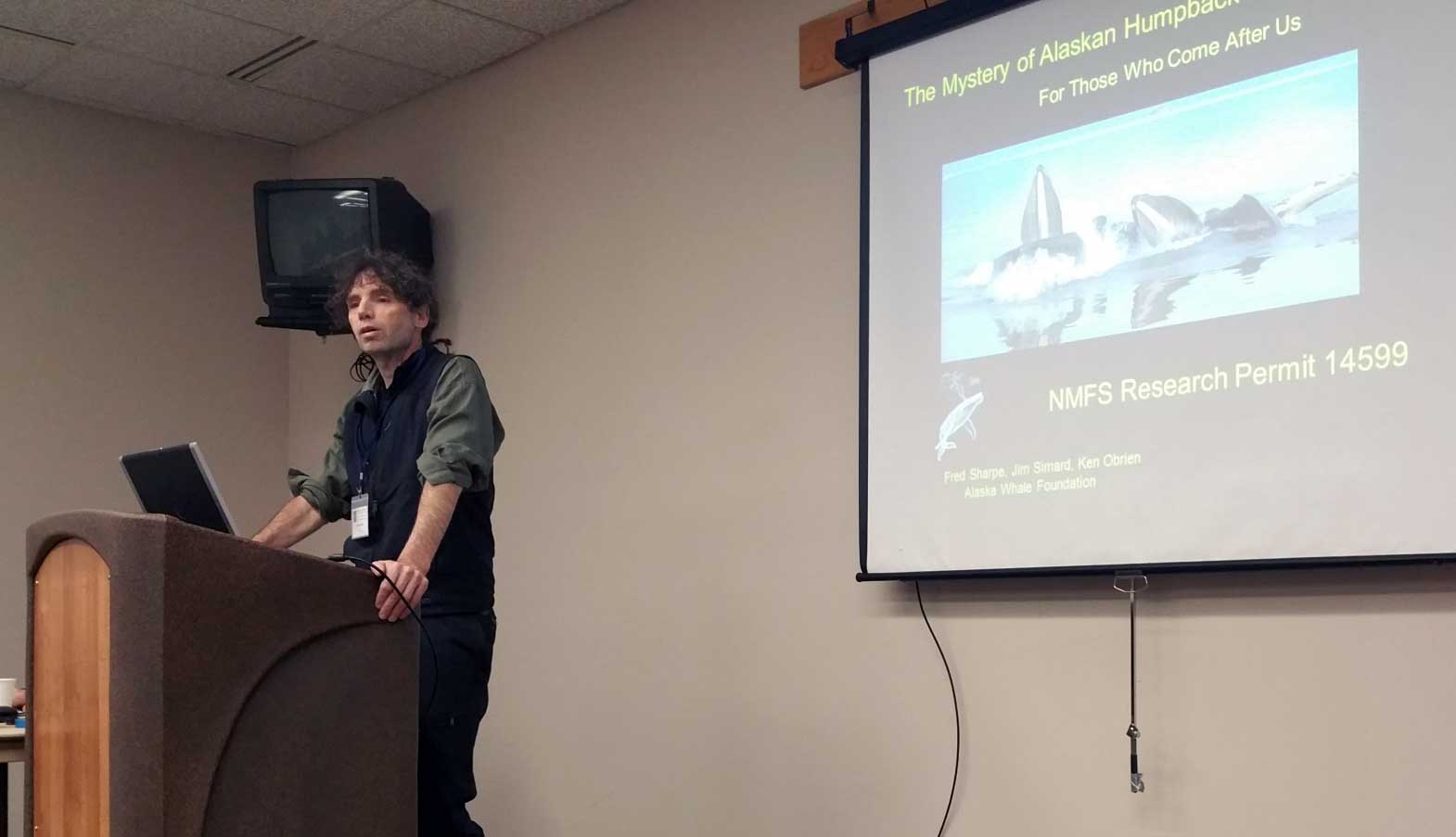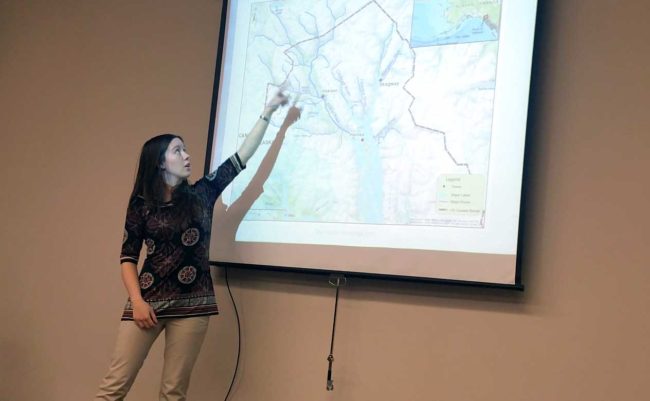
Using traditional knowledge to support ecological research was the focus of two presentations Saturday at the “Sharing Our Knowledge” Tlingit clan conference.
Behavioral ecologist Fred Sharpe, Ph.D., of the Alaska Whale Foundation, explained to attendees how researchers were using Tlingit place names to help better understand the historical ecology of Southeast.
Sharpe is most concerned about the eastern North Pacific right whale, a highly endangered species with an estimated population of about 30. He said the names of traditional sites or clan houses can indicate that a particular species once populated the area; that’s information that could help researchers understand why a species is in decline.
“Place names can be very instructive,” Sharpe said. “We learned that there’s a place on Chichagof island called Sea Otter Point. And that’s super cool because sea otters aren’t there (now) but it does suggest that they were there in the not-too-distant past.”
Sharpe said Tlingit traditional knowledge has influenced how he thinks about whales.
“I think that gaining some insight into the Tlingits’ perspective has really helped me see how a people can live for centuries, millennia, perhaps even longer with these animals and appreciate them in a nonconsumptive context,” he said. “We see that they loved them and were very proud of them. We take incredible inspiration from that to see how you can intelligently manage species.”
Using Tlingit perspective and knowledge as a guide, Sharpe said he hopes to find ways to return to a more equitable relationship with Southeast’s whales.
Another presenter, Allyson Olds, focused her master’s thesis on hooligan run times in the Chilkat and Chilkoot rivers. The main goal of her research was to establish a baseline for the annual arrival of the fish. Aside from other forms of research, Olds interviewed 20 people in the area to understand how the population has changed.

Little research has been done on the fish, which are not currently harvested commercially.
Hooligan is a subsistence food source in Southeast and parts of Southcentral. The small, oily fish usually arrive in Alaska streams and rivers in early summer to spawn, making them one of the first fish available for harvest by subsistence users and wildlife.
Understanding how climate change may impact run times could be key to sustainable management of the fishery, Olds said.
“There’s big implications on the influence of climate change, which not only affects run timing of course,” Olds said. “It affects everything else since so many wildlife predators rely on these. … They’re not just there, they migrate and they show up for these runs. If that run timing is changing, it can also affect their migrations as well.”
Olds said there is some concern that hooligan population decline is making its way north. On the Pacific coast, the once-prolific forage fish was listed as threatened under the Endangered Species Act in 2010. The following year, British Columbia listed the fish as endangered. Earlier this year, the Alaska Department of Fish & Game closed the Ketchikan area fishery.
Ideally, Olds said, her research would be replicated in other spawning areas to help paint a more accurate picture of the health of the hooligan populations.
